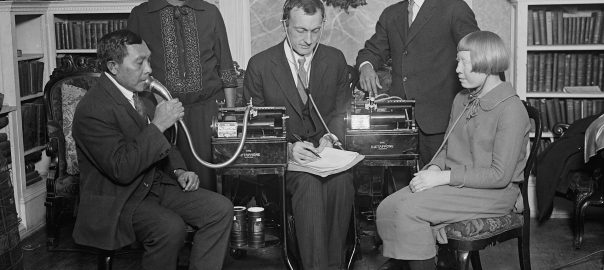In the 1930s, the Bureau of Indian Affairs under the leadership of Willard Beatty, decided to try teaching Navajo children bilingually. Beatty asked for help from the Smithsonian Institution, which assigned him a linguist, John P. Harrington, who had little experience with Athabaskan languages. Harrington started to work with Robert W. Young, a young graduate student at the University of New Mexico who had begun fieldwork with a student of Reichard.” (Spolsky 2009)
See also:
“Although J.P. Harrington published brief articles on Navajo in 1911 and 1929, his most sustained work in this language spanned the years 1935 to 1946. Correspondence and reports indicate that during this period he was in the field from July to November 1939, and from August to mid-November 1940 at such places as Ft. Wingate and Gallup, New Mexico, and Phoenix, Tuba City, and Window Rock, Arizona… His success in the field is due in no small part to his brilliant young collaborator, Robert W. Young, whom he first contacted in August 1936 and with whom he carried on an extensive correspondence into the mid-1940s. In fact, their joint efforts in Navajo were accomplished mainly by mail.”
(https://collections.si.edu/search/detail/edanmdm:siris_arc_363476)
